Enterprise Contact Center Software Insights and Reviews

Imagine a world where your business can handle customer interactions seamlessly across channels, powered by cutting-edge tools. Enterprise cloud contact center software is transforming how businesses engage with customers in 2025. With 95% of interactions driven by AI, these platforms streamline operations and boost efficiency. You can unify email, voice, live chat, and text messaging into one system, while social media accounts for 25% of support requests. Companies like Sobot lead the charge, helping businesses deliver exceptional customer experiences that build loyalty and trust.
Understanding Enterprise Cloud Contact Center Software

Definition and Purpose
Enterprise cloud contact center software is a game-changer for businesses looking to manage customer interactions across multiple channels. It’s a cloud-based solution that brings together phone, email, chat, text messaging, and even social media into one seamless platform. By hosting these tools in the cloud, you can access advanced features like automatic call distributors (ACDs) and interactive voice response (IVR) systems. This makes it easier to deliver fast, efficient, and personalized customer support.
Here’s what makes it stand out:
- It enables an omnichannel experience by integrating all communication channels into a single platform.
- Your agents get a unified dashboard to handle inquiries without switching between tools.
- Advanced routing and IVR capabilities ensure customers are directed to the right person or team.
With this setup, you’re not just managing customer interactions—you’re transforming them into meaningful experiences.
Key Features of Modern Contact Center Software
Modern contact center software is packed with features designed to enhance both customer and agent experiences. Let’s break down some of the most critical ones:
| Feature | Why It Matters |
|---|---|
| Omnichannel Communication | Customers expect seamless interactions across channels, boosting satisfaction and loyalty. |
| AI Integration | AI automates repetitive tasks and provides insights, making your operations smarter. |
| Operational Efficiency | Tools like call routing streamline workflows and improve agent productivity. |
| Compliance with Regulations | Built-in security ensures you meet data privacy standards, avoiding potential legal issues. |
For example, 68% of Asian retailers have adopted omnichannel strategies, leading to higher customer satisfaction. AI-powered tools, like those offered by Sobot, also help businesses automate tasks and gain valuable insights, making your contact center more efficient.
The Role of Cloud Technology in Customer Experience
Cloud technology is the backbone of today’s contact center as a service. It allows you to scale operations, reduce costs, and improve the overall customer experience. With a cloud-based contact center, you can enjoy benefits like faster response times and fewer system downtimes.
Take a look at these stats:
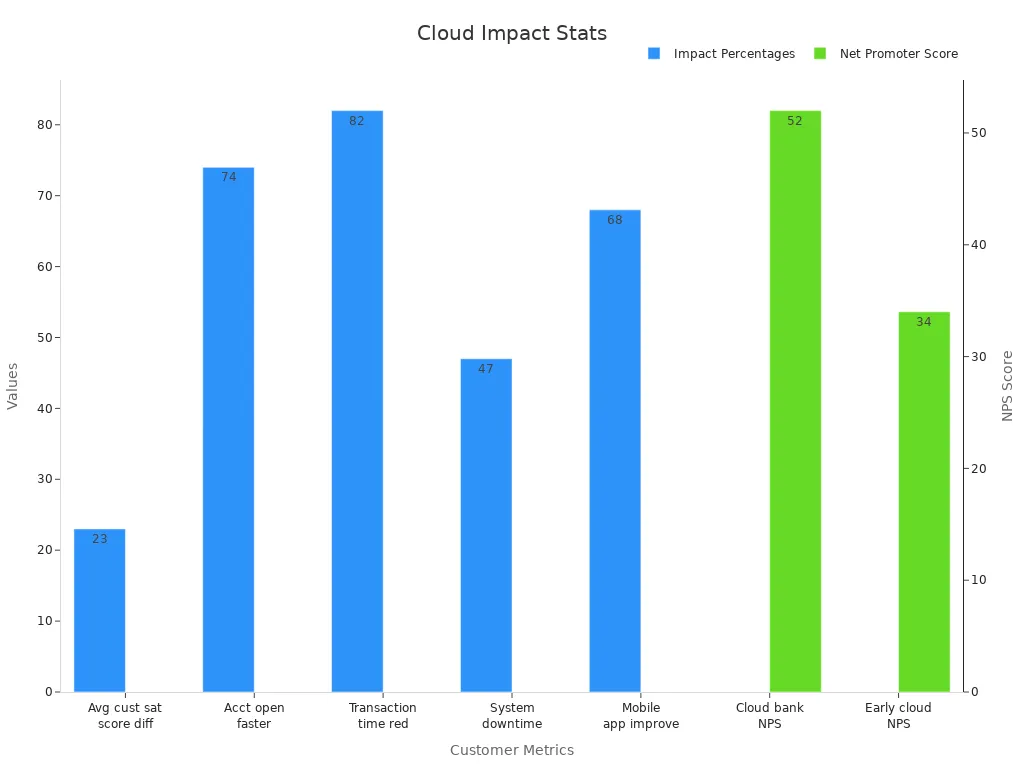
Here’s what the numbers say:
- Customer satisfaction scores are 23 points higher with cloud-based customer experience solutions.
- Transaction processing times drop by 82%, while system downtimes decrease by 47%.
By adopting a cloud-based contact center, you’re not just keeping up with the times—you’re setting the stage for exceptional customer experiences.
Top Enterprise Cloud Contact Center Software in 2025
Best Call Center Software for Advanced Features
When it comes to advanced features, the best call center software in 2025 stands out by offering tools that make your operations smarter and more efficient. These platforms are designed to simplify complex workflows while delivering exceptional customer experiences. Let’s take a closer look at some key comparisons:
| Feature | Dialpad Support | Five9 | Aircall |
|---|---|---|---|
| Ease of setup | Set up in hours | ? | ? |
| AI transcription and summaries | ✅ | ✅ | ✅ |
| Proprietary LLM | ✅ - DialpadGPT | ❌ | ❌ |
| Training dataset | 8 billion minutes of business conversation data | ? | ? |
| Price per agent, per month | Starting at $80 | Starting at $119 | Starting at $302 |
Advanced features like AI transcription and proprietary language models (like DialpadGPT) are game-changers. They help you analyze conversations, summarize calls, and even predict customer needs. Sobot’s Voice/Call Center solution also excels in this area. It offers intelligent IVR, AI-powered voicebots, and real-time monitoring, ensuring your team can handle calls efficiently while delivering personalized service.
If you’re looking for software that combines ease of setup, affordability, and cutting-edge AI, platforms like Sobot and Dialpad are worth exploring. These tools don’t just improve your operations—they transform how you connect with your customers.
Best for CRM and Omnichannel Integrations
In today’s fast-paced world, customers expect seamless interactions across multiple channels. That’s why the best call center software for CRM and omnichannel integrations is a must-have. These platforms unify your communication channels, giving agents access to complete customer histories for faster issue resolution.
Here’s what the data says:
- Companies with strong omnichannel engagement retain 89% of their customers.
- Organizations using omnichannel contact centers see a 23% boost in agent productivity.
- 67% of contact centers leverage data analytics to improve service quality.

Sobot’s Omnichannel Solution is a prime example of how integration can elevate your customer service. It consolidates voice, email, social media, and live chat into one platform. Agents can access a unified workspace, making it easier to provide personalized support. Plus, its integration capabilities with tools like Salesforce and Shopify ensure your team has everything they need to succeed.
By adopting omnichannel solutions, you’re not just meeting customer expectations—you’re exceeding them. These tools empower your team to deliver consistent, high-quality service across every channel.
Best for AI-Powered Customer Support
AI is no longer a luxury—it’s a necessity for modern contact centers. The best call center software in 2025 leverages AI to automate tasks, provide real-time insights, and enhance customer interactions. Here’s how AI-powered tools are making a difference:
| Performance Indicator | Description |
|---|---|
| Agent Productivity | Metrics like average wait time and resolution times highlight areas for improvement. |
| Customer Satisfaction | Surveys and interactions reveal insights into customer experiences. |
| Cost Savings | AI identifies inefficiencies, helping you optimize operations and reduce expenses. |
Sobot’s AI-powered solutions, like its Voice/Call Center and Chatbot, are leading the way. The AI-driven voicebot can handle repetitive queries, freeing up agents to focus on complex issues. It also provides real-time data on call volumes and customer satisfaction, helping managers make informed decisions. With features like smart call routing and intent recognition, Sobot ensures your team can deliver faster resolutions and better experiences.
By integrating AI into your contact center software, you’re not just keeping up with trends—you’re setting new standards for customer support.
Best for Scalability and Global Reach
Scalability and global reach are essential for businesses aiming to grow and serve customers worldwide. The best call center software in 2025 excels in these areas, offering tools that adapt to your needs as your business expands. Whether you're a startup or a multinational corporation, these platforms ensure you can handle increasing customer demands without compromising service quality.
Why Scalability Matters
Imagine your business growing rapidly, with customer inquiries doubling overnight. Scalable call center software lets you add agents, integrate new channels, and manage higher call volumes effortlessly. It ensures your operations remain smooth, even during peak times. Plus, it helps you avoid costly downtime or service disruptions.
Global Reach: Connecting Across Borders
Global reach is equally important. Customers expect support in their preferred language and time zone. Leading call center software provides access to international phone numbers, multilingual support, and time zone-based analytics. These features make it easier for you to connect with customers worldwide, delivering personalized service no matter where they are.
Growth Metrics That Speak Volumes
The contact center software market is booming, and the numbers prove it:
- Estimated market size in 2030: USD 9.5 billion
- Estimated market size in 2031: USD 19.6 billion
- Projected market size in 2032: USD 23.6 billion
| Metric | Value |
|---|---|
| Market Size in 2024 | USD 40.9 Billion |
| Market Forecast in 2033 | USD 152.4 Billion |
| Market Growth Rate 2025-2033 | 15.7% |
These figures highlight the increasing demand for efficient customer service solutions, driven by trends like remote work, AI adoption, and omnichannel strategies. By choosing scalable and globally-focused call center software, you're setting your business up for long-term success.
Sobot: A Leader in Scalability and Global Reach
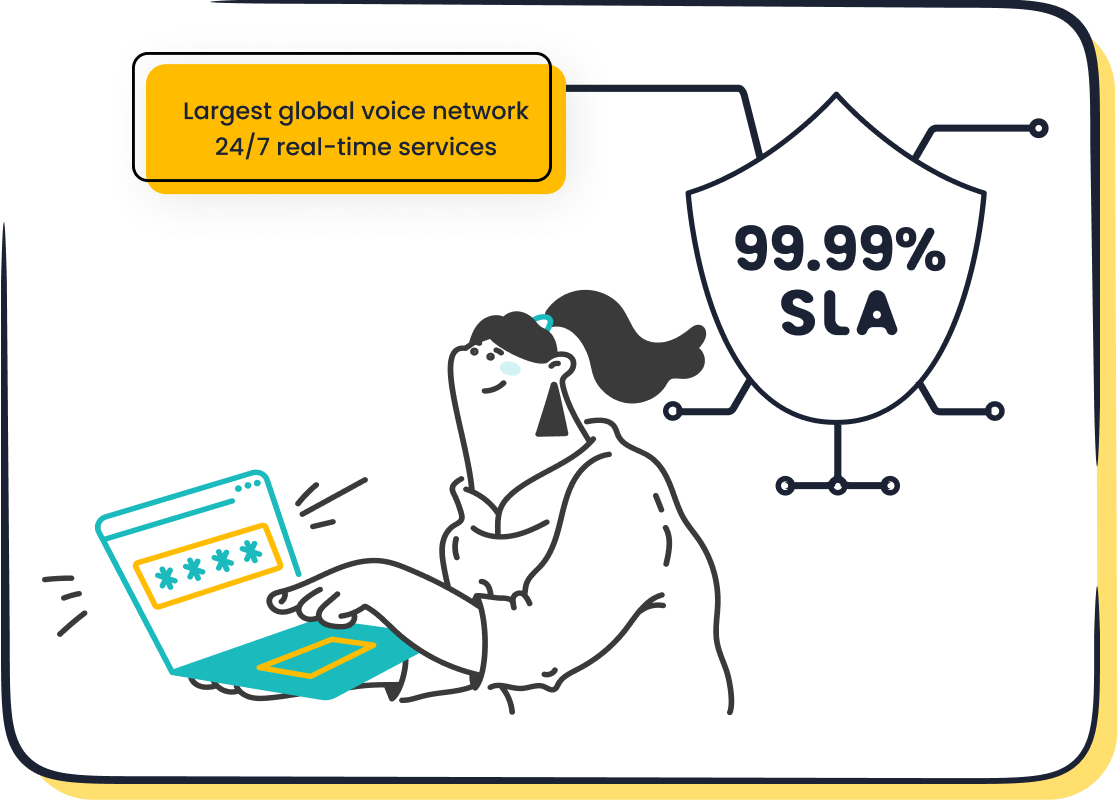
Sobot's Voice/Call Center solution is a prime example of scalability and global reach in action. With 99.99% system uptime and access to phone numbers worldwide, Sobot ensures your operations run smoothly, no matter how big your business grows. Its time zone support and multilingual AI-powered voicebot make it easy to serve customers across borders. Whether you're expanding into new markets or handling seasonal spikes, Sobot has you covered.
Sobot Voice/Call Center: A Comprehensive Solution
If you're looking for the best call center software to transform your customer interactions, Sobot Voice/Call Center is the answer. This all-in-one platform combines advanced features, scalability, and global reach to deliver exceptional results.
Key Features That Make a Difference
Sobot's Voice/Call Center offers a range of features designed to enhance your operations:
- Intelligent IVR: Customize greetings, route calls, and go live in real-time.
- Unified Workspace: Manage calls and customer data from one dashboard.
- AI-Powered Voicebot: Handle repetitive queries and recognize customer intent.
- Global Number Availability: Access phone numbers in over 50 countries.
- Time Zone Support: Provide localized service based on customer regions.
Proven Performance
Sobot's capabilities aren't just theoretical—they're backed by impressive data:
| Metric | Performance Data |
|---|---|
| Reduction in inbound discussion volume | 20% |
| Increase in positive feedback | 96% + |
| Correct answers provided by AI platform | Over 80% |
| Customer satisfaction rate | Over 95% |
| Self-service question resolution | 22.2% |
| Customer satisfaction score (CSAT) | 97% |
| Problem resolution rate | 85% |
| Customer happiness rate | 99% |
| Increase in sign-off rate | About 35% |
| Increase in COD collection rate | About 40% |
These metrics show how Sobot helps businesses improve efficiency, reduce costs, and enhance customer satisfaction. For example, its AI-powered voicebot resolves over 80% of queries accurately, freeing up agents to focus on complex issues. The result? Happier customers and more productive teams.
Why Choose Sobot?
Sobot isn't just software—it's a partner in your success. Its platform integrates seamlessly with CRM systems, ensuring your team has the tools they need to excel. With features like bulk outbound tasks and encrypted data transfer, Sobot makes managing customer interactions easier and more secure. Plus, its economic SaaS rental model keeps costs manageable, even for small businesses.
By choosing Sobot Voice/Call Center, you're investing in a solution that grows with your business, adapts to your needs, and delivers results you can count on.
Key Features and Benefits of Enterprise Cloud Contact Center Software
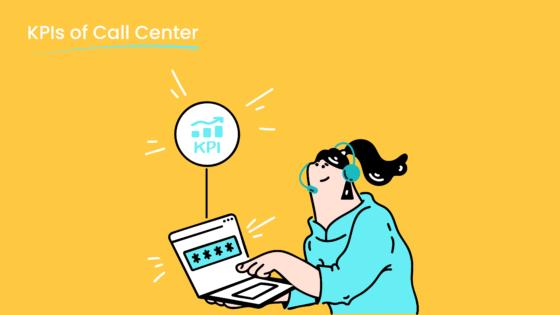
Enhancing Customer Experience with AI and Automation
AI and automation are revolutionizing how businesses interact with customers. With enterprise cloud contact center software, you can deliver faster, more personalized service. AI tools handle repetitive tasks like answering FAQs or routing calls, freeing your agents to focus on complex issues. This not only improves efficiency but also enhances the overall customer experience.
For instance, AI-powered automation significantly reduces response times, ensuring customers get the help they need without delay. Automated workflows also boost agent productivity, allowing them to resolve issues more effectively. Imagine a scenario where a customer contacts your support team through an omnichannel platform. AI instantly identifies their issue and routes them to the right agent, who already has all the relevant details. This seamless process leads to higher satisfaction and loyalty.
Here’s how AI and automation improve key metrics:
| Metric | Improvement Description |
|---|---|
| Agent Productivity | Automated workflows enhance efficiency and job satisfaction by allowing agents to focus on complex issues. |
| Response Times | AI-powered automation significantly reduces response times, leading to faster resolutions. |
| Customer Satisfaction | Enhanced customer interactions through AI tools result in higher satisfaction and loyalty. |
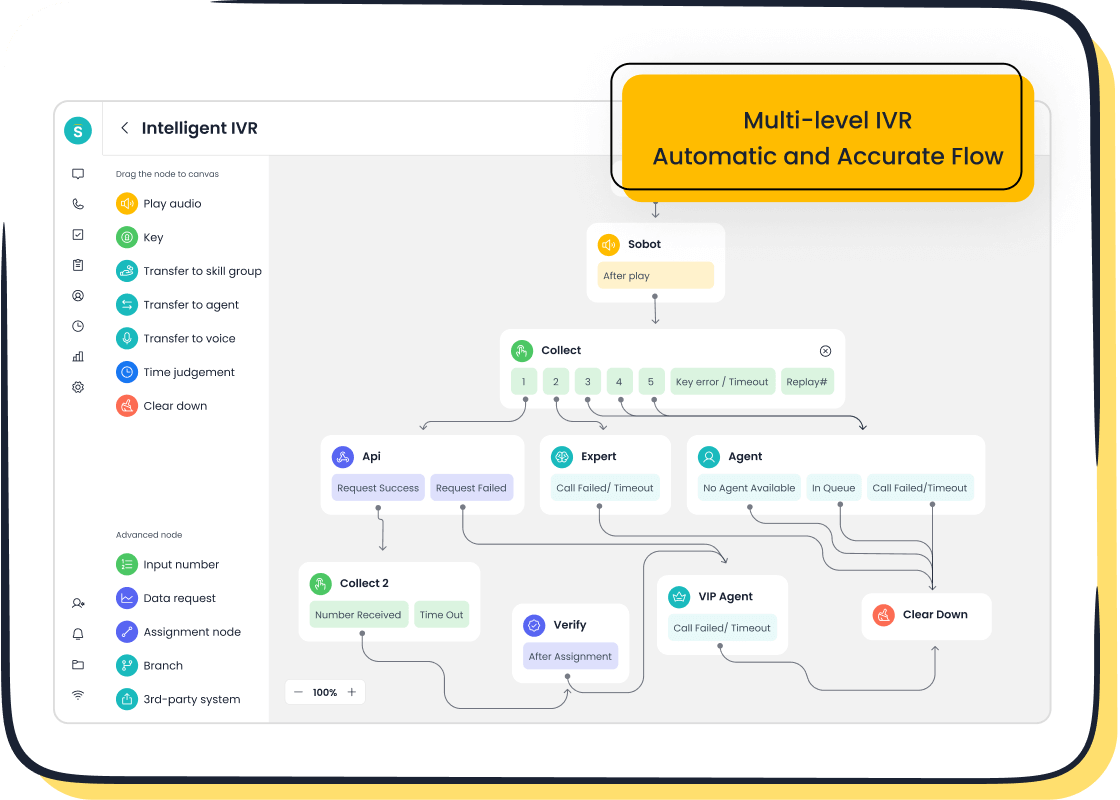
Sobot’s AI-powered solutions, like its Voice/Call Center and Chatbot, are perfect examples. The AI-driven voicebot handles repetitive queries with over 80% accuracy, while smart call routing ensures customers reach the right agent quickly. These tools make your contact center smarter and your customers happier.
Scalability and Cost Efficiency for Growing Businesses
As your business grows, so do your customer support needs. Cloud-based contact center solutions are designed to scale effortlessly, allowing you to add agents, integrate new channels, or handle higher call volumes without breaking a sweat. Unlike traditional systems, they don’t require expensive hardware or infrastructure, making them a cost-effective choice for growing enterprises.
Here’s why scalability and cost efficiency matter:
| Feature | Benefit |
|---|---|
| Faster Deployment | Enables quick onboarding of new agents and support for remote teams. |
| Greater Flexibility | Allows scaling up or down as needed without the costs of physical infrastructure. |
| Cost Savings | Reduces capital expenditures and lowers operational costs compared to on-premise solutions. |
| High-Quality Support | Enables companies to maintain high standards of customer support while being cost-effective. |

Sobot’s Voice/Call Center solution is a great example of scalability in action. With 99.99% system uptime and global number availability, it ensures your operations run smoothly, even during peak times. Its economic SaaS rental model eliminates the need for costly infrastructure, making it an ideal choice for businesses of all sizes.
Unified Workspaces for Seamless Agent Experience
Managing multiple communication channels can be overwhelming for agents. That’s where unified workspaces come in. A unified workspace consolidates all customer interactions—whether they’re via email, voice, live chat, or social media—into a single dashboard. This simplifies workflows and ensures agents have all the information they need to provide exceptional service.
Imagine an agent handling a customer inquiry. Instead of switching between tools, they can view the customer’s entire history in one place. This not only saves time but also reduces errors and improves resolution rates. Unified workspaces also enhance collaboration among teams, making it easier to share insights and resolve issues faster.

Sobot’s Omnichannel Solution takes this a step further. It integrates voice, email, social media, and live chat into one platform, giving agents a complete view of customer interactions. With features like AI-driven chatbots and CRM integrations, Sobot ensures your team has everything they need to succeed. This leads to a 30% boost in productivity and higher customer satisfaction scores.
Tip: Unified workspaces don’t just make life easier for your agents—they also improve the overall customer experience by ensuring faster, more accurate responses.
Security, Compliance, and Reliability in Cloud Solutions
When it comes to managing customer interactions, security and reliability are non-negotiable. You need to know that your customers' data is safe and that your system will perform when it matters most. That’s where cloud-based contact center solutions shine.
These platforms follow strict compliance standards like PCI, HIPAA, and GDPR. This means they’re designed to protect sensitive information, whether it’s credit card details or personal health records. Encryption protocols and access controls add an extra layer of security, keeping your data safe from unauthorized access. Regular security audits and staff training ensure your team stays up-to-date on best practices. These measures don’t just protect your business—they also build trust with your customers.
Did you know? Cloud-based solutions often boast an uptime of 99.99%, ensuring your operations run smoothly without interruptions. This reliability means you can focus on delivering great service without worrying about system failures.
By choosing a cloud-based contact center, you’re not just investing in technology—you’re committing to a secure, compliant, and reliable future for your business.
Integration with CRM and Other Business Tools
Imagine having all your customer data in one place, ready to use whenever you need it. That’s the power of integrating your contact center software with CRM and other business tools. It’s like giving your team a superpower to deliver faster, more personalized service.
When your contact center connects with your CRM, your agents can access complete customer histories in seconds. This means no more asking customers to repeat themselves. Instead, your team can focus on solving problems and building relationships. Integration also streamlines workflows, making it easier to manage tasks like follow-ups and ticketing.
Here’s how integration impacts performance:
| KPI | Description |
|---|---|
| Call Resolution Rates | Measures the percentage of calls resolved on the first contact. |
| Agent Productivity | Assesses the efficiency and output of agents during interactions. |
| Customer Satisfaction | Evaluates the overall satisfaction of customers with the service provided. |
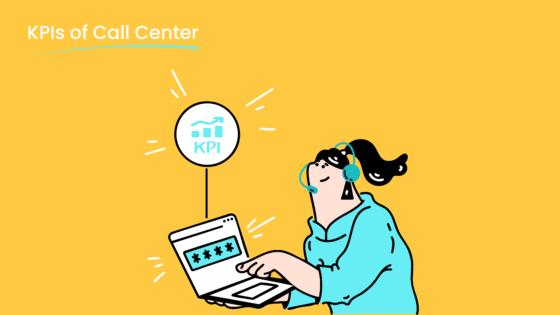
Sobot’s solutions excel in this area. They integrate seamlessly with popular tools like Salesforce and Shopify, giving your team everything they need to succeed. Whether it’s managing customer inquiries or analyzing performance data, these integrations make your operations smoother and more efficient.
Pro Tip: Integrated systems don’t just save time—they also improve accuracy. With all your tools working together, you can reduce errors and deliver a better experience for your customers.
By leveraging integrations, you’re not just improving your contact center—you’re transforming how your entire business operates. It’s a win-win for you and your customers.
Metrics to Evaluate the Success of Contact Center Software
Customer Satisfaction (CSAT) and Net Promoter Score (NPS)
How do you know if your contact center software is delivering results? Start by measuring customer satisfaction (CSAT) and Net Promoter Score (NPS). These metrics give you a clear picture of how happy your customers are and whether they’d recommend your business to others.
CSAT is straightforward. Customers rate their experience on a scale, often from 1 to 5. Higher scores mean your customers are satisfied, which builds loyalty and advocacy. For example, the retail industry typically aims for an 80% CSAT benchmark, while finance targets 85%.
| Industry | CSAT Benchmark |
|---|---|
| Retail | 80% |
| Telecom | 75% |
| Finance | 85% |
NPS, on the other hand, measures how likely customers are to recommend your business. It’s calculated by subtracting the percentage of detractors (low scorers) from promoters (high scorers). Together, CSAT and NPS help you identify strengths and areas for improvement.
Comparing your performance data with industry standards is the best way to figure out what your call center excels at and what opportunities you have for improvement.
First Call Resolution (FCR) and Average Handle Time (AHT)
First Call Resolution (FCR) and Average Handle Time (AHT) are two metrics that go hand-in-hand. FCR measures how often customer issues are resolved on the first call. High FCR rates mean fewer follow-ups, happier customers, and lower call volumes.
AHT tracks the average time agents spend on each call. While shorter AHT is ideal, it shouldn’t come at the expense of quality. Balancing AHT with FCR ensures your team resolves issues efficiently without rushing through conversations.
- High FCR correlates with improved customer satisfaction and reduced repeat calls.
- Lower AHT allows agents to assist more customers while maintaining service quality.
- Together, these metrics highlight how well your contact center software supports effective issue resolution.
When your software optimizes workflows, it helps agents resolve issues faster and more accurately. This leads to better customer experiences and higher satisfaction rates.
Agent Productivity and Utilization Rates
Your agents are the backbone of your contact center. Measuring their productivity and utilization rates shows how effectively they’re using their time and resources. Productivity metrics track how many calls or tasks agents complete, while utilization rates measure the percentage of time they spend actively assisting customers.
Generative AI tools, like those integrated into modern contact center software, have revolutionized agent productivity. These tools automate tasks like call driver generation and FAQ creation, giving agents actionable insights. As a result, query handling times are shorter, and first-call resolution rates are higher.
- Shorter query handling times improve efficiency.
- Real-time translation capabilities enhance customer interactions.
- Fewer errors lead to better satisfaction for both customers and agents.
By adopting cloud-based solutions, you empower your team to work smarter, not harder. This doesn’t just improve productivity—it also boosts morale and creates a better experience for your customers.
System Uptime and Reliability
When it comes to running a contact center, reliability is everything. Imagine your system going down during peak hours—chaos, right? That’s why modern cloud-based contact center software is built with uptime and reliability in mind. These platforms ensure your operations stay smooth, no matter what.
Here’s how they achieve it:
- Geo-redundant data centers: Your data is stored in multiple locations, so even if one center faces an issue, another takes over.
- Protection against localized outages: Unlike traditional on-premise systems, cloud platforms are less vulnerable to regional disruptions.
- Enterprise-grade SLAs: Service level agreements guarantee high uptime, often reaching 99.99%.
With these features, you can trust your contact center software to keep running, even during unexpected challenges. This reliability doesn’t just prevent downtime—it also builds trust with your customers. After all, a dependable system means faster responses and happier clients.
ROI and Cost Savings
Switching to cloud-based contact center software isn’t just about better features—it’s also a smart financial move. Businesses that adopt these solutions often see impressive returns on investment (ROI) and significant cost savings.
Take a look at the numbers:
| Category | Description | Amount |
|---|---|---|
| Initial Costs | Implementation and integration costs | $50,000 |
| Software and hardware expenses | $150,000 | |
| Training and onboarding costs | $20,000 | |
| Annual Operational Costs | Annual licensing fees | $100,000 |
| Annual subscription and usage fees | $20,000 | |
| Ongoing training and updates | $10,000 | |
| Revenue | Increase in revenue from improved customer experience and upselling | $550,000 per year |
| Savings from improved operational efficiency | $52,000 per year | |
| Total Revenue | Total revenue from investment | $602,000 |
| Year 1 ROI | Net Profit | $252,000 |
| ROI Calculation | 72% | |
| Year 2 ROI | Net Profit | $472,000 |
| ROI Calculation | 363% |
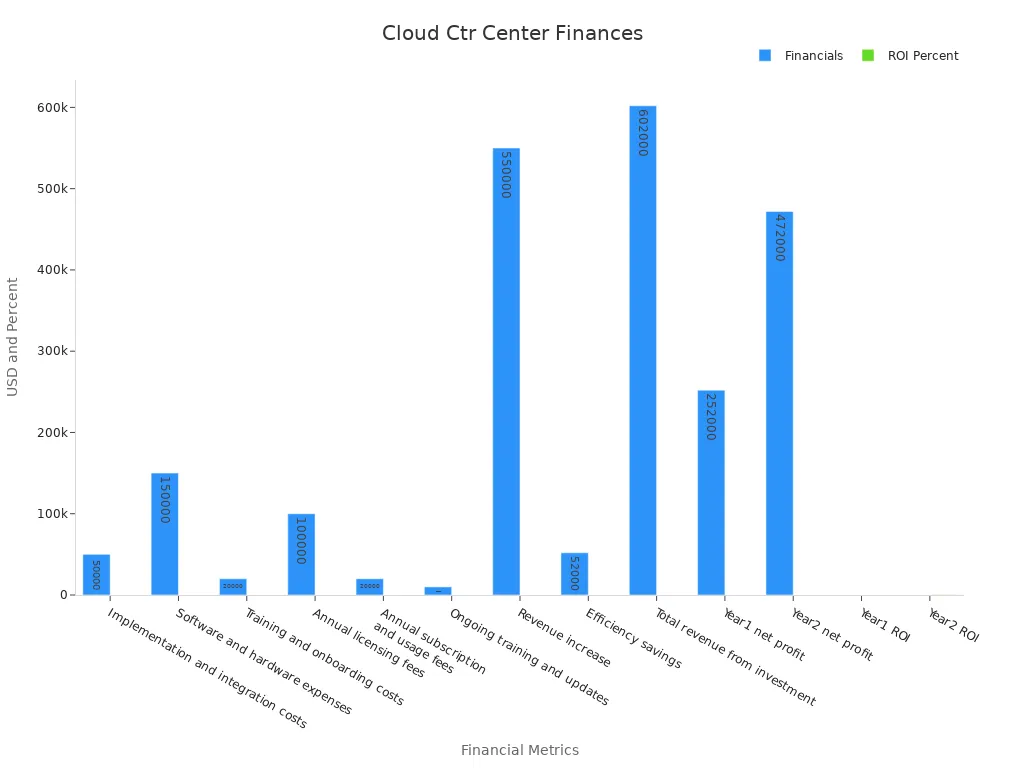
These figures highlight the financial benefits of cloud contact center software. You save on hardware and maintenance while boosting revenue through better customer experiences. Plus, the scalability of these platforms means you only pay for what you need, making them a cost-effective choice for businesses of all sizes.
Comparing Leading Providers: Expert Methodologies and Insights
Evaluation Criteria for the Best Call Center Software
Choosing the best call center software requires a clear understanding of what makes a platform truly effective. Industry experts recommend evaluating software based on several key criteria. These factors ensure the solution aligns with your business needs and delivers measurable results.
| Evaluation Criteria | Why It Matters |
|---|---|
| Unified Data Access | Simplifies workflows by integrating data from CRM, QA, and other tools without complex setups. |
| AI-to-Action Delivery | Transforms insights into actionable steps, like coaching or team improvements, in real time. |
| Coaching Impact Tracking | Tracks how coaching improves KPIs, ensuring training efforts lead to tangible results. |
| Agent Engagement Tools | Keeps agents motivated with gamification and recognition, boosting retention and performance. |
| Role-Based Dashboards | Customizable views for agents, managers, and executives to focus on relevant metrics. |
| Scalability & Organizational Fit | Adapts to growing businesses, supporting multiple locations and teams without disruptions. |
Tracking KPIs like Average Handle Time (AHT) and First Call Resolution (FCR) is also essential. Benchmarking against over 500 North American call centers helps you gauge your performance and make informed decisions. With these criteria, you can confidently select software that enhances both customer satisfaction and operational efficiency.
Insights from Industry Experts and Analysts
Experts agree that the best call center software combines advanced features with measurable outcomes. Metrics like Average Speed of Answer (ASA) and Cost Per Call (CPC) are critical for evaluating performance. Here’s a quick breakdown:
| Metric | Description | Formula |
|---|---|---|
| Average Speed of Answer (ASA) | Measures how quickly agents answer calls. | ASA = Total wait time of all answered calls / Total number of answered calls |
| Average Handle Time (AHT) | Tracks the total time agents spend handling calls, including hold and after-call work. | AHT = (Total Talk Time + Total Hold Time + Total After Call Work Time) / Total Calls Handled |
| Cost Per Call (CPC) | Calculates the average cost of handling each call. | CPC = Total Cost of Call Center Operations / Total Calls Handled |
| Service Level | Measures the percentage of calls answered within a specific time frame. | Service Level (%) = (Calls Answered in X seconds or less / Total Inbound Calls) x 100 |
These metrics highlight how software impacts efficiency and customer satisfaction. For example, Sobot’s Voice/Call Center excels in reducing AHT with features like smart call routing and AI-powered voicebots. By focusing on these metrics, you can identify areas for improvement and maximize your ROI.
Real-World Use Cases: Sobot and Samsung's Success Story
Samsung’s collaboration with Sobot showcases how the right call center software can transform customer service. Samsung faced challenges managing inquiries across multiple channels. They needed a unified platform to streamline operations and improve efficiency. Enter Sobot’s all-in-one contact center solution.
Sobot integrated Samsung’s communication channels into a single platform. This allowed agents to handle inquiries without switching systems. Features like AI-driven chatbots and VIP video support enhanced the customer experience. The results were impressive:
- A 30% increase in agent efficiency.
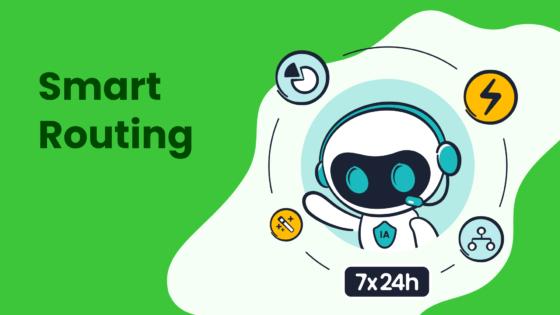
- A 97% customer satisfaction rate.
- Seamless omnichannel service delivery.
Samsung’s success demonstrates the power of Sobot’s solutions. By unifying data and leveraging AI, Sobot helped Samsung deliver faster, more personalized support. This case study proves that the right software doesn’t just solve problems—it drives measurable success.
Strengths of Top Providers in 2025
When you’re choosing contact center software, understanding the strengths of top providers can help you make the right decision. In 2025, the best platforms stand out by offering innovative features, unmatched reliability, and tools that make your operations smoother.
1. Advanced AI Capabilities
AI is transforming how businesses interact with customers. Leading providers use AI to automate repetitive tasks, predict customer needs, and provide real-time insights. For example, Sobot’s AI-powered voicebot doesn’t just answer questions—it understands intent and routes calls to the right agent. This ensures faster resolutions and happier customers.
2. Seamless Omnichannel Integration
Top providers excel at unifying communication channels. Whether it’s email, live chat, or social media, these platforms bring everything into one place. Sobot’s Omnichannel Solution is a great example. It consolidates all interactions into a unified workspace, so agents can deliver personalized support without switching tools.
3. Scalability and Global Reach
Growing businesses need software that scales effortlessly. Providers like Sobot offer global number availability and time zone support, making it easy to serve customers worldwide. With 99.99% system uptime, you can trust that your operations will run smoothly, even during peak times.
4. Security and Compliance
Data security is a top priority. The best platforms follow strict compliance standards like GDPR and HIPAA. Sobot ensures encrypted data transfer and reliable system performance, giving you peace of mind while handling sensitive information.
5. Real-Time Analytics
Providers that offer robust analytics help you make smarter decisions. Sobot’s solutions include real-time monitoring and performance insights, so you can track metrics like call resolution rates and agent productivity. These tools empower you to optimize your operations and improve customer satisfaction.
By focusing on these strengths, you can choose a provider that aligns with your goals and delivers exceptional results.
Choosing the right enterprise cloud contact center software can transform how you handle customer interactions. In 2025, platforms like Sobot lead the way with tools that improve customer experience and operational efficiency. When selecting a solution, focus on scalability, AI capabilities, and omnichannel integration. These features ensure your team delivers seamless support across channels. By leveraging cloud contact center technology, you’ll create faster resolutions, happier customers, and a stronger business foundation.
FAQ
What is enterprise cloud contact center software?
Enterprise cloud contact center software is a tool that helps you manage customer interactions across channels like phone, email, and chat. It’s hosted in the cloud, so you can access it from anywhere. It simplifies communication and improves customer service.
How does AI improve contact center performance?
AI automates repetitive tasks like answering FAQs or routing calls. It also provides real-time insights to help agents work smarter. With AI, you can deliver faster responses and more personalized service, making your customers happier. 🤖✨
Can I integrate contact center software with my CRM?
Yes! Most modern contact center platforms, like Sobot, integrate seamlessly with CRMs like Salesforce. This lets you access customer data instantly, making it easier to provide personalized support and resolve issues faster.
Is cloud-based contact center software secure?
Absolutely. Cloud platforms follow strict security standards like GDPR and HIPAA. They use encryption and regular audits to protect your data. With providers like Sobot, you get 99.99% uptime and reliable performance.
Why should I choose Sobot for my contact center needs?
Sobot offers an all-in-one solution with features like AI-powered voicebots, omnichannel integration, and global scalability. It’s cost-effective, secure, and designed to grow with your business. Plus, it’s trusted by brands like Samsung and HP. 🚀
See Also
Best Reviewed Contact Center Solutions for the Year 2024
Leading Cloud Contact Center Services Evaluated for 2024
Exploring AI-Powered Solutions for Enterprise Call Centers
Best Ten Call Center Analytics Tools for 2024
Comprehensive Guide to Omnichannel Solutions for Call Centers